Description
Mohammed Khaïr-Eddine
Agadir
Translated by Pierre Joris and Jake Syersak
Introduction by Khalid Lyamlahy
ISBN: 978-1-944884-85-7 (pbk.)
(Ebook available)
(September, 2020)
Agadir is loosely based on the earthquake which devastated the Moroccan city of the same name in 1960, and Khaïr-Eddine’s experience as a civil servant assigned to investigate the aftermath of the cataclysm between 1961 and 1963. An unnamed narrator sent to the city “in order to sort out a particularly precarious situation” tells the story of a veritably razed Moroccan epicenter and a citizenry begging for reconstruction and reimagination. In a surreal, polyphonic narration that explodes into various tesserae of fiction, autobiography, reportage, poetry, and theatre, the narrator quickly discovers that in exhuming the city’s physical remnants he cannot help but exhume the complex social, political, cultural, and historical dynamics that make up postcolonial Moroccan society. The mysterious narrator, increasingly besieged by hallucinations of the past and visions of the future, comes to incarnate what Albert Memmi once called “the role of the colonized,” and to suffer “a magnified vision of all the ambiguities and impossibilities of those colonized.” To which Khaïr-Eddine appends his envisioned role of the writer: one who uses his magnified vision to transform his very life into “an investigation, a fight against all forms of oppression and repression” until his “literature is a beautiful weapon.”
“With his explosive style, surrealist imagery, and political critique, Khaïr-Eddine was among the most important avant-garde writers of his generation. Translators Pierre Joris and Jake Syersak forge a biting idiom in English to convey the apocalyptic world of Agadir, as well as the creative violence of its language. A substantial introduction by Khalid Lyamlahy serves to contextualize the work in its historical and literary context. The publication of the English translation of Agadir in 2020, with its portrayal of “catastrophe, the place from which questions will unceasingly arise,” feels fitting—unsettlingly and urgently so.”
—Phoebe Bay Carter, Kenyon Review
An excerpt from the Introduction:
“Mohammed Khaïr-Eddine: From the Wounds of the Past to the Library of the Future”
by Khalid Lyamlahy
When Agadir came out in 1967 via Editions du Seuil in Paris, Khaïr-Eddine was only twenty-six. The following year, the book received the Prix des Enfants terribles established in honor of French writer Jean Cocteau. The prize not only launched Khaïr-Eddine’s literary career in Paris but also labelled him as one of the most turbulent and innovative North African writers of his generation. Born in 1941 in Azro Wado (The Stone of the Wind), a small Berber village near Tafraout in the Anti-Atlas mountains, Khaïr-Eddine grew up with his mother and his grandfather: “the only one who ever truly loved me,” as he remembers him in Agadir. The repudiation of Khaïr-Eddine’s mother by his absent father who ran a shop in Casablanca, combined with his separation from his native land as he joined him in the metropolitan city at the age of eleven, had a profound impact on his work. His friend French poet and publisher Jean-Paul Michel, to whom Agadir is dedicated, suggests that these early wounds help us to understand Khaïr-Eddine’s subsequent revolt against the figure of the father and, more broadly, against all forms of social, religious, and political power.
In the period between 1961 and 1963, Khaïr-Eddine worked for the Social Security Department in Casablanca and Agadir where he conducted surveys among the survivors of the earthquake, an experience that would directly inspire the novel. Agadir was originally entitled L’Enquête (The Investigation), later changed on the advice of the publisher. Like Khaïr-Eddine, the narrator of Agadir is a civil servant dispatched to the city “in order to sort out a particularly precarious situation.” In Agadir, he soon becomes aware of the extent of the chaos: “I was lied to. There is not the faintest hint of a city here. Yes, a far cry from even the slightest trace of a building or any worn-out elevation of highway. Were there ever any buildings here? What there is is silence, along with a resignation that underscores the vast expanse of the stone.” The narrative documents not only the calamitous consequences of the human tragedy but also the shock it generated across the country. Four years after the independence of Morocco from French and Spanish rule, the earthquake killed more than 12,000 people with an equal number injured and incidentally revealed the tremendous work that remained to be done in order to rebuild the country and implement efficient plans for its future development.
*
Post-independence disillusionment and the challenge of intellectual and cultural decolonization were at the core of Khaïr-Eddine’s early poetic initiatives. In April 1964, he published a manifesto entitled Poésie toute (Full Poetry), soon followed by a short-lived review Eaux vives (Vivid Waters), throughout both of which he rails against the mundane misappropriation of poetry and calls for a fierce struggle to defend people’s rights and fulfill their necessities. Two years later, Khaïr-Eddine and his fellow poets Abdellatif Laâbi and Mostafa Nissabouri, joined by a group of Moroccan artists, cofounded the avant-garde journal of culture and politics Souffles (Breaths) which would serve as a leading platform for experimental writing and postcolonial thought. Deeply informed by Third Worldism, anti-imperialism, and revolutionary ideology, the journal and its Arabic counterpart—Anfas, launched in 1971—became a mouthpiece of the Moroccan far left and a transcontinental forum bringing together writers, artists, and activists from not only the Maghreb but also the Arab world, Sub-Saharan Africa, and the Americas.
…
In his early works, Khaïr-Eddine constantly subverts cultural signs and meanings, conflates historical periods, distorts linguistic structures, transgresses punctuation norms, and weaves together a wide range of eccentric and often disruptive images to perform what he calls in Moi l’aigre (I, Bitter, 1970) a “linguistic guerrilla warfare.” This subversive process, at play in Agadir and his subsequent works such as Le Déterreur (The Unearther, 1973) and Une Odeur de mantèque (A Smell of Fat, 1976), addresses the need to deconstruct the French language while promoting a dynamic, original, and revolutionary conception of writing. For him, “literature is a beautiful weapon”: literary creation and political engagement are intertwined, constantly enlightening and feeding one another.

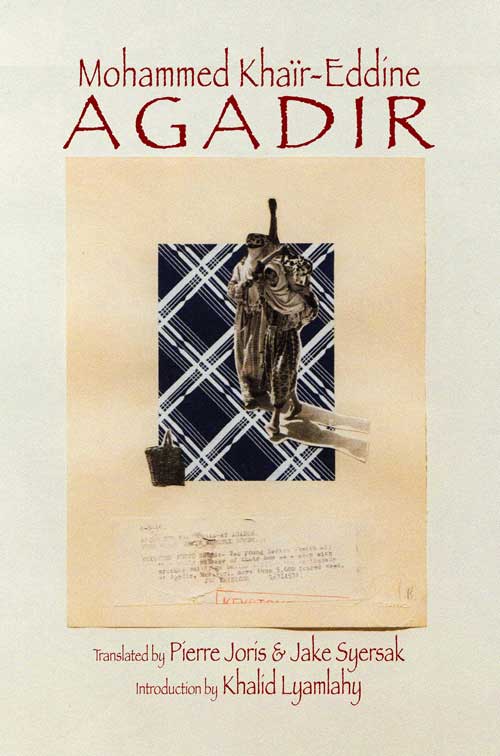
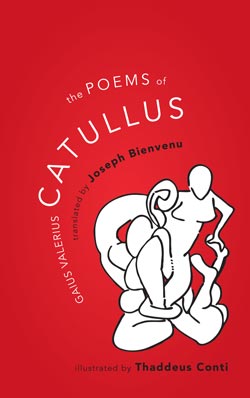
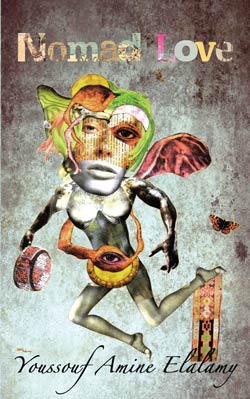
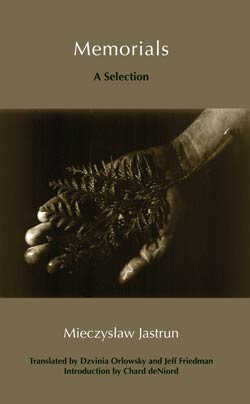
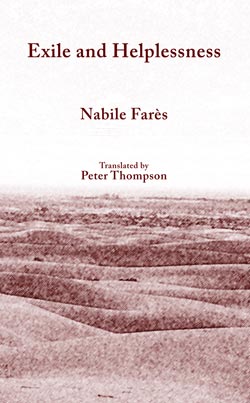

Reviews
There are no reviews yet.